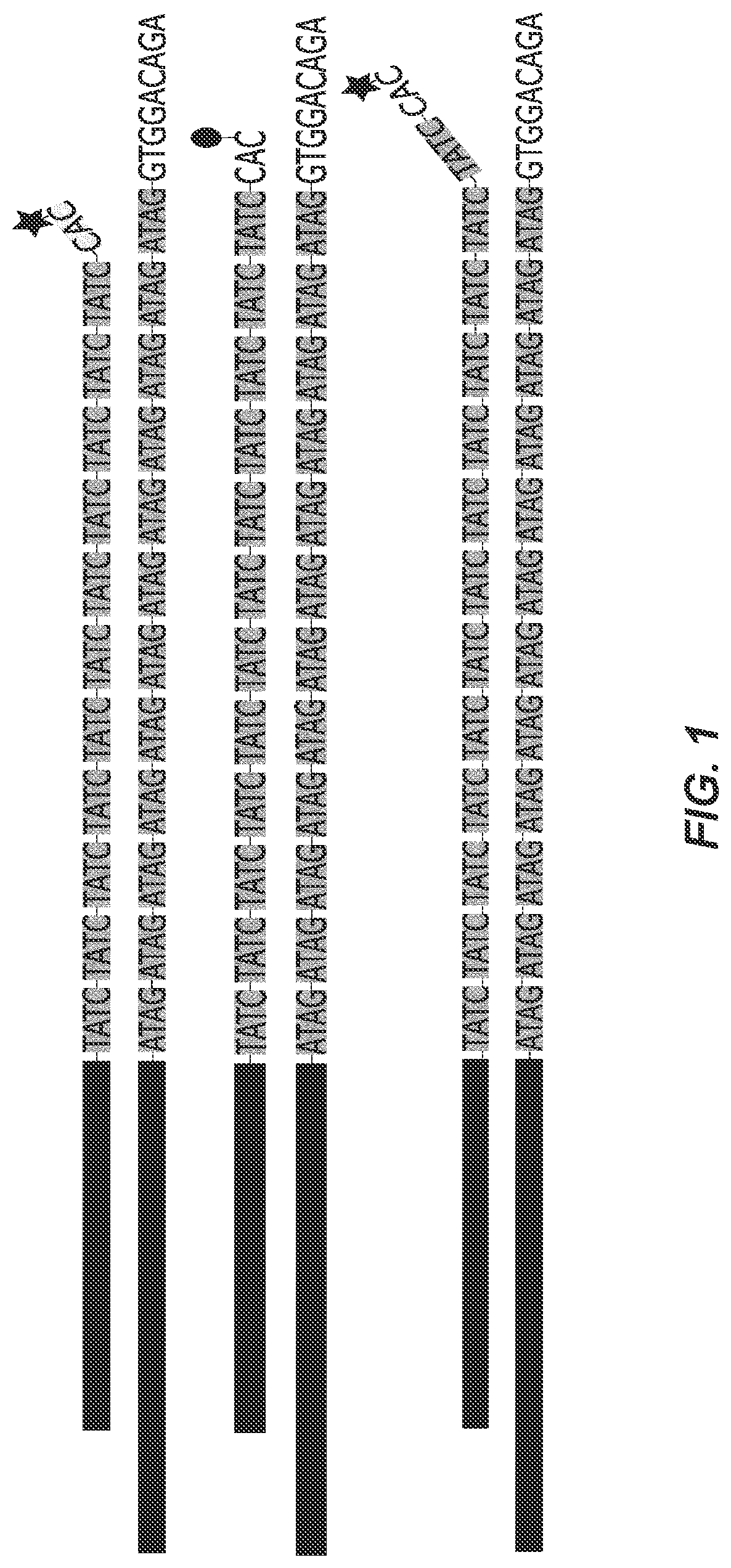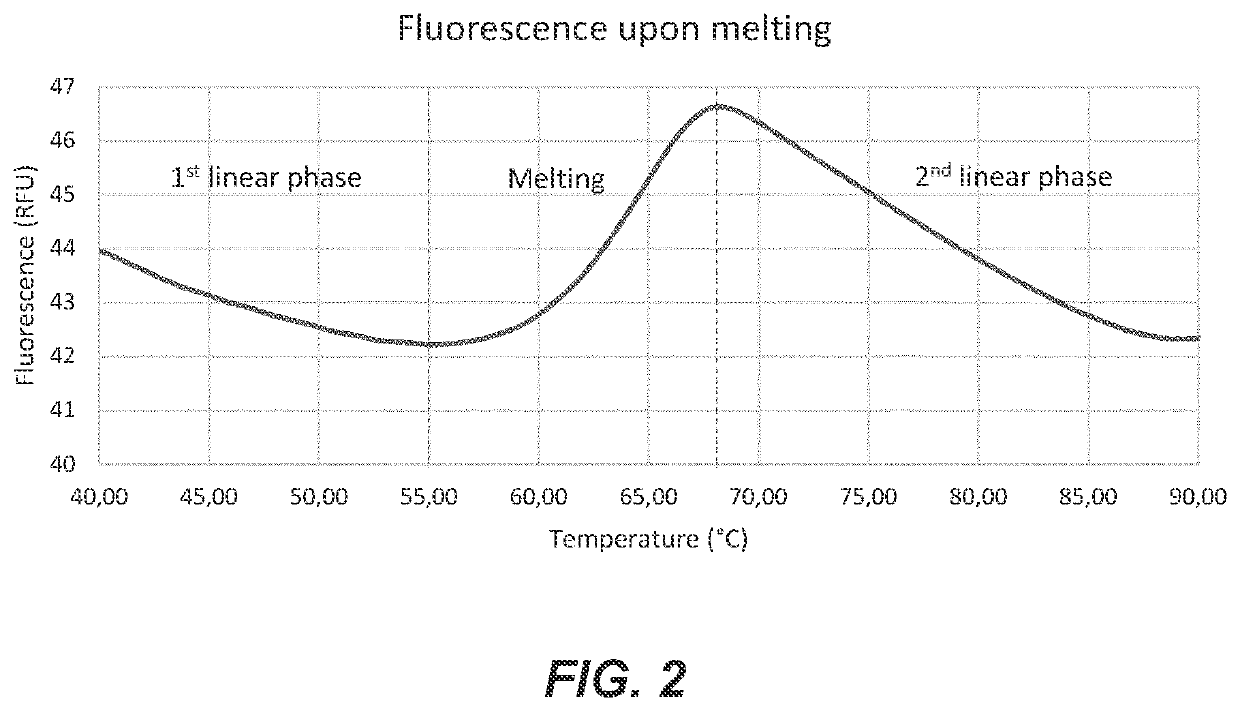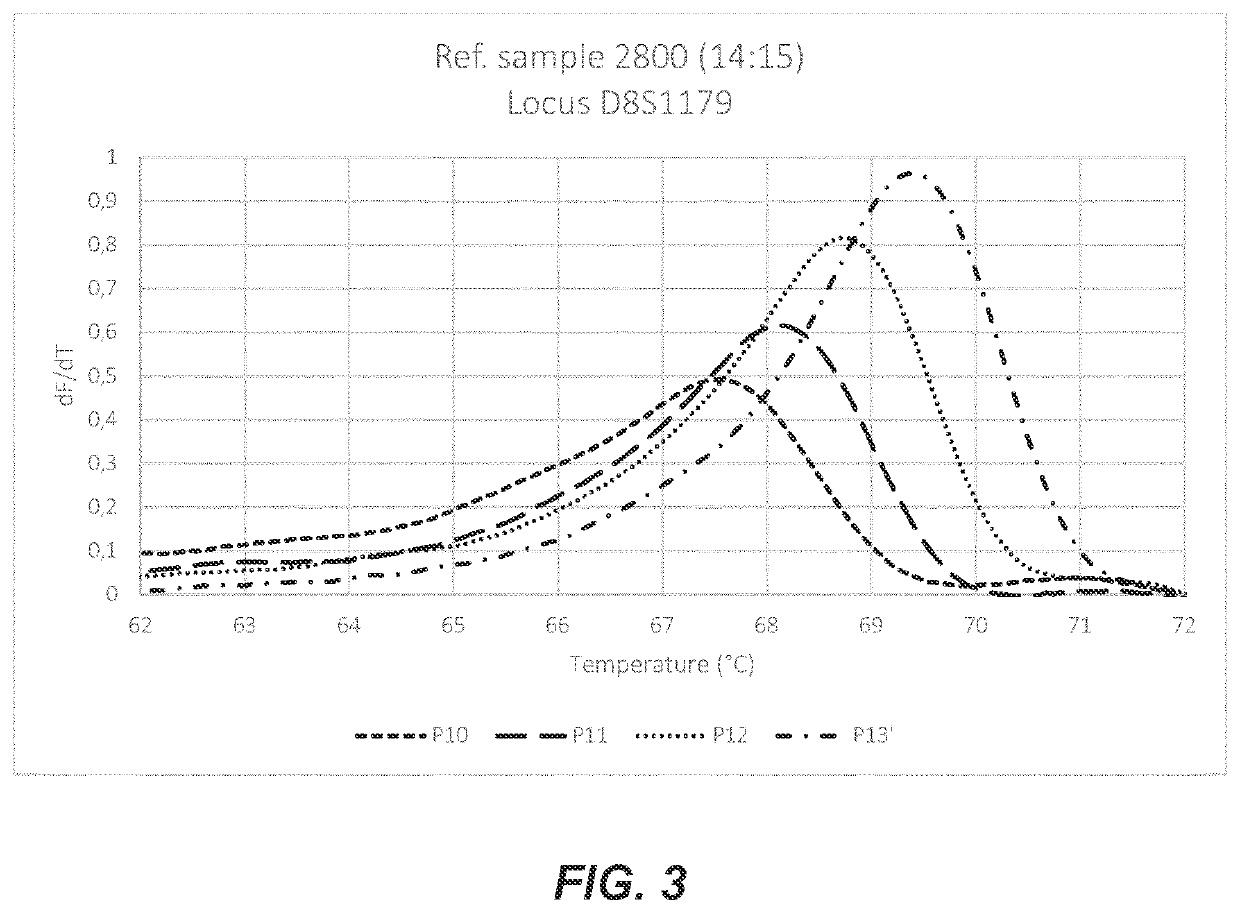Probe and method for str-genotyping
a technology of tandem repeats and probes, applied in the field of dna fingerprinting, can solve the problems requiring rather bulky equipment, and design restrictions, and achieve the effect of increasing the cost of probes and reducing the number of probes
- Summary
- Abstract
- Description
- Claims
- Application Information
AI Technical Summary
Benefits of technology
Problems solved by technology
Method used
Image
Examples
examples
1. Example 1: STR—Genotyping Buccal Swabs (D16S539 Locus)
[0057]Three buccal swabs were immersed in a volume of 200 μL sterile HPLC-water. After a vortex-step of 30,” the swab was removed and the water was used as input for PCR. Singleplex asymmetric PCR was performed with 30 μL of input sample. Primer concentrations were 0.1 μM forward primer and 1.5 μM reverse primer. The volume of the PCR mixture was 50 μL containing MgC12+ at a concentration of 0.5 mM, dNTPs at 200μM each, 1x Qiagen PCR buffer and 1.3U HotStarTaq enzyme. Activation of the polymerase was done by heating the PCR mix at 95° C. for 15 minutes followed by 60 cycles of 95° C. for 1 minute, 59° C. for 1 minute and 72°C. for 80 seconds. Primer sequences can be found in table 1.
[0058]After asymmetric PCR, aliquots of 8.5 μL amplified product were divided in a 96-Well plate. To each separate well, 1.5 μL of one particular probe was added at a starting concentration of 1 μM. These mixtures were denatured for 10 minutes at 9...
PUM
| Property | Measurement | Unit |
|---|---|---|
| volume | aaaaa | aaaaa |
| volume | aaaaa | aaaaa |
| fluorescence | aaaaa | aaaaa |
Abstract
Description
Claims
Application Information
 Login to View More
Login to View More - R&D
- Intellectual Property
- Life Sciences
- Materials
- Tech Scout
- Unparalleled Data Quality
- Higher Quality Content
- 60% Fewer Hallucinations
Browse by: Latest US Patents, China's latest patents, Technical Efficacy Thesaurus, Application Domain, Technology Topic, Popular Technical Reports.
© 2025 PatSnap. All rights reserved.Legal|Privacy policy|Modern Slavery Act Transparency Statement|Sitemap|About US| Contact US: help@patsnap.com



